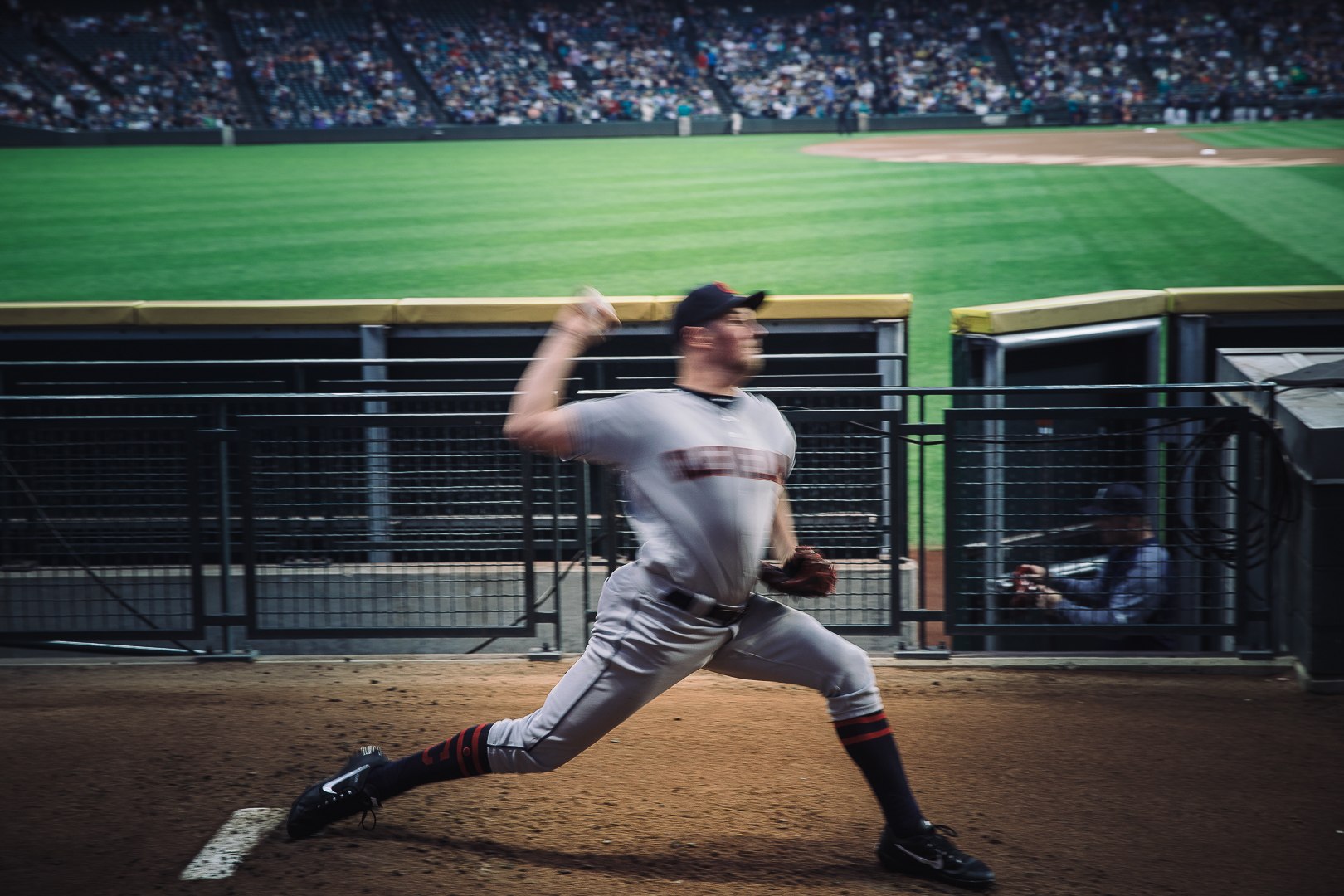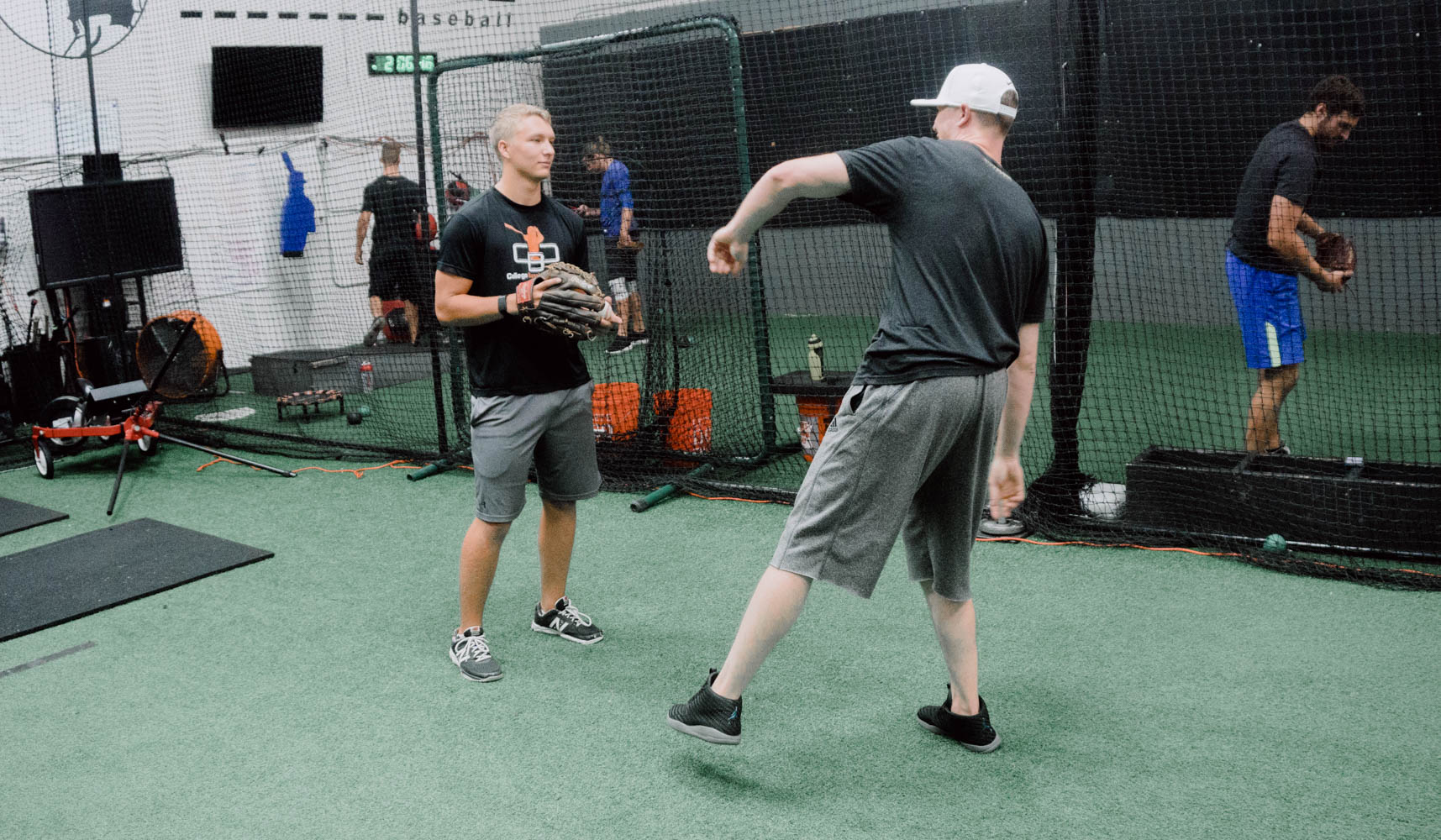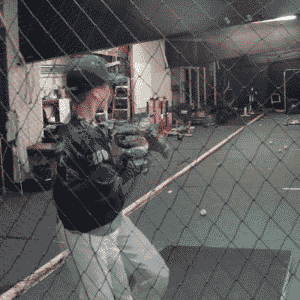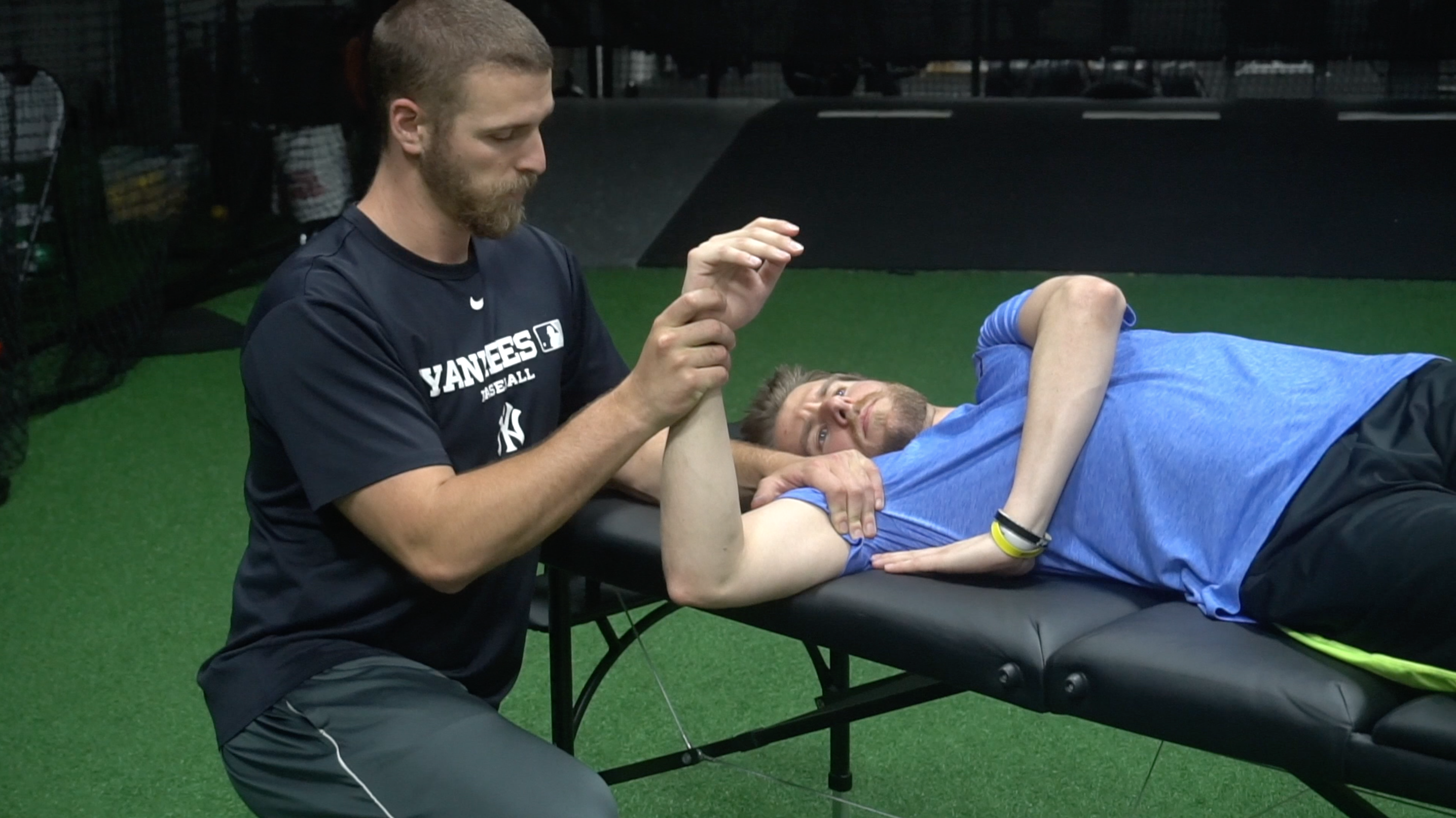Changing Pitching Mechanics

There is sometimes disagreement regarding how to change pitching mechanics or if it can be done. Some coaches feel that mechanics are relatively set in stone; others see mechanics as something that can change but with difficulty.
Luckily, more research has been done on this topic. Today let’s review what has recently been published along with some findings of our own.
Pitching mechanics can change for a variety of reasons, but coaching pitching mechanics a near constant occurrence with every pitcher. An understated topic when discussing pitching performance and health is that pitchers are almost constantly in a state of change.

On the one hand, coaches ask their pitchers to be consistent performers while on the other hand, they consistently ask them to change. This is the life of a pitcher at every level.
Quite literally every pitcher is trying to get better, and often that means trying to tweak or change mechanics in order to throw harder, have more command, or throw a better offspeed pitch.
We can see how these changes affect performance, but it’s much harder to see how they change the torque that pitchers are developing.
That is why we use the Motus sleeve to collect data on pitchers when they first get to our gym and after they’ve stayed and thrown off the mound.
While we don’t know how small changes in mechanics affect adult pitchers and the torque put on their body, we know they can have drastic performance effects.
Looking at our summer data from 2017, we can see that we saw pitchers generally throw harder and incur more stress on their elbows but in a way that stayed proportionally similar.
Broadly speaking, pitchers produce more torque as they throw harder but there are instances where pitchers can move more efficiently, experiencing faster velocities but also seeing a reduction in elbow torques. But it makes sense that, as a whole, as velocity increases so does elbow torque.
This means discussions about elbow torque (or stress, as it may be referred to) is really about getting as low torque as possible while still throwing at a high velocity.
Even though it’s believed that pitching mechanics are hard to change, we can see evidence above of changes: for instance, arm speed decreased (though the “arm speed” metric on the Motus sleeve is not the same as peer review papers, we explained why here), and arm slot and shoulder rotation changed as well.
We are limited in analysis by those metrics, but they are enough to see that some changes occurred while the pitchers were on a weighted ball and strength-training program.
Up until now there has be limited evidence in peer-review papers that pitching mechanics can be changed. However more research has been published recently that demonstrates how mechanics can be changed, showing that they are actually quite fluid.
Youth Athletes 9-14
Notably, while many coaches believe that pitching mechanics are hard or impossible to change, a significant portion of practice time is spent on changing pitching mechanics.
But even when we ask youth pitchers to repeat their mechanics, we can get drastically different results. Below is an overlay of a youth pitcher throwing a fastball and a curveball while being told to repeat his mechanics for both.

Here we can see that even when the goal is repeating the same movement, they are actually quite different.
Youth pitchers experience a wider range of mechanics, and they simply do not have good enough body control to not do so.
We know that youth pitchers are going to be coached into certain positions; sometimes the pitchers will change their mechanics to copy a different pitcher’s mechanics, and mechanics are going to change with fatigue.
Here, we can see some long-term mechanical changes tracked by ASMI: they published a 7-year study when they retested pitchers’ mechanics annually. Athletes were excluded if they were no longer pitching, but they were able to get 35 participants analyzed at least three times.
Now there have been multiple biomechanical studies comparing biomechanical differences among athletes of different ages. However, this study aimed to identify when and possibly how these changes occur over time. The authors hypothesized that joint forces, torques, and angular velocities would increase with age.
One of the particularly interesting findings was a significant increase in normalized elbow varus torque from ages 13-14 and from 14-15. The increases in kinetics (the forces acting on a pitcher’s body) were statistically significant difference for each year, but normalized kinetics saw the biggest increases from ages 13-15. This seems to parallel the biggest physical differences in males during puberty.
“The implication of these previous studies combined with the current data is that kinematic changes are most significant in the first few years of competitive pitching (perhaps 9-13 years of age)”
Many of the changes can also be attributed to more practice (increased reps), increased body awareness, and the fact that athletes are growing the most during this time.
Now these pitchers obviously didn’t receive the same universal coaching, which suggests that for youth athletes there is a wide range of coaching that can cause changes in pitching mechanics.
Another study, specifically with 9 year old pitchers, found that they were able to significantly change their mechanics in 21 days using training techniques from the Texas Baseball Ranch.
Not only does this show the ability young athletes have to change mechanics in a relatively short period of time, compared to the yearly review above, but also it shows that mechanics can be changed outside of the usual verbal cues.
This 21-day study was not completed with a biomechanics lab but instead with cameras in a consistent position.
High School, College, and Professional
ASMI took 46-baseball pitchers who were evaluated at least twice, with an average of 12 months between evaluations, and examined the differences in the reports. The range of the comparisons was 2-48 months.
ASMI gave the pitchers evaluations and defined flaws in there as deviations from the elite range, both too high and too low, that ASMI has established for pitchers that they have in their database.
Overall there were 138 “flaws” detected in the pretest, and 61 (44%) of them were corrected by the second test. The 46 pitchers had 223 biomechanical parameters in the normal range and 41 parameters (18%) developed new flaws by the second evaluation.
So not only can certain pitching mechanics be fixed, but certain movement patterns they perform well can change.
The study also didn’t look at any specific teaching or coaching methodology, which again suggests that mechanics are fluid and change over time at all ages.
Another Reason for Changed Pitching Mechanics
We mentioned before that athletes can primarily change their mechanics because of coaching, imitation, and fatigue, but as pitchers age, a more complicated reason often occurs: injury.
Coming back from an injury, trying to play through one, or having excessive soreness is going to drive a player to change how he moves. It’s no secret that the body is going to want to create a movement path that avoids pain in any way.
As players age, there is an increased chance that they have tried to play through or around some sort of issue.
The biggest take away from knowing this possibility is instituting a solid screening process. We see screening as consisting of two parts: one on movement, and a second on strength and performance.

Some movement issues can be addressed by more mobility work, soft tissue work, or seeing a physical therapist. Other issues can also be strongly related to strength deficiencies. Without screening, athletes and coaches aren’t going to know what direction to go in.
How We Can Track the Changes
So, we understand that players are almost constantly tweaking or changing some part of their mechanics, whether driven by themselves or by a coach. What can we do to track changes?
The first and best option would be using a Motus sensor to track the changes on a pitcher’s elbow over time. We think the best way to use the sensor is to track changes over a long period of time.

The possibility of seeing changes during multiple bullpens over weeks and months is incredibly valuable. You can see the effects of coaching, strength training, mobility work and throwing specific work not only show in velocity but also in torque as well.
We understand that not everyone will have a Motus sensor and that, more often than not, video is primarily used to evaluate pitchers.
We don’t use video to compare mechanics; we prefer to use the Motus sensor or our biomechanics lab. But we understand the desire to try and measure a pitcher’s mechanics by video. It helps that nearly everyone has a pretty nice camera in their pocket. But coaches should keep in mind that while video can be very useful, it can also be easily misused.
Most importantly, if you are going to compare video of a pitcher from multiple bullpens, the video needs to be taken from the exact same spot.
When videos are being compared from different angles, you end up increasing the possibility of creating issues that aren’t there. Which means a changes you think you see in a pitchers mechanics could be coming from a different camera angle and not a movement change.
This is known as a parallax error, which in baseball, occurs when pitchers and coaches are looking at every small mechanical change they can from different camera locations. Parallax error is also why comparisons of pitchers to MLB pitchers from different angles are generally worthless.
The best way to make sure that the camera is in the same spot is to use a tripod along with an iphone or camera attachment, and mark the ground with pieces of tape where the legs of the tripod should be. This way, you can have the pitcher stand on the same point of the mound and have more reliable video.
Of course, bullpens can and should be tracked for performance metrics as well. (Austin Wasserman has a good blog post on tracking bullpens.) We track the velocities of our mound velocity, and we track velocity, pitch type, and strike percentage when athletes throw live ABs. You can see an example sheet of what we use here.
It’s become increasingly clear that pitching mechanics are not set in stone but are much more fluid than many believed. This is why it’s important for coaches and players to measure and track the changes they make not only for performance but also for health reasons as well.
This article was written by Research Associate Michael O’Connell
Comment section